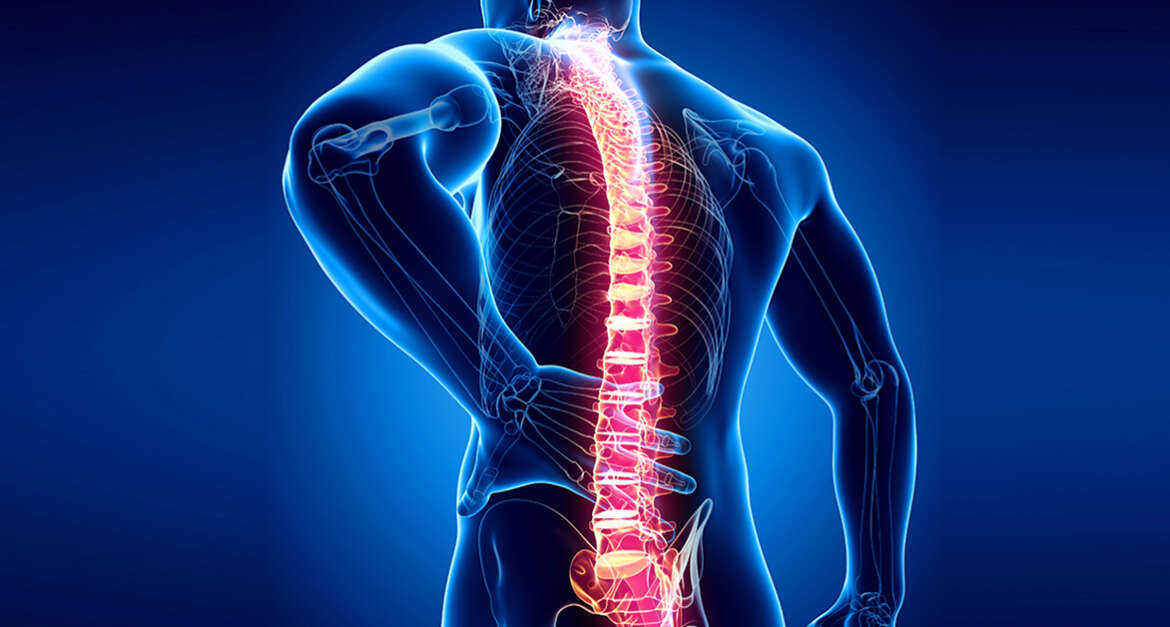Spinal stenosis is a common condition that affects the spinal canal, leading to the narrowing of the space where the spinal cord and nerves pass through. This narrowing can result in various symptoms, including pain, numbness, and weakness in the back, legs, or arms. Understanding the causes, symptoms, and treatment approaches for spinal stenosis is crucial for those affected by this condition. In this blog post, we will delve into these aspects and also highlight the expertise of Dr Vivek Bonde, a renowned spine and brain surgeon. For more information about Dr Bonde and his practice, please visit his website at https://www.spinenbrain.com/.
Causes of Spinal Stenosis-
Spinal stenosis can be classified into two main types: primary and secondary. Primary spinal stenosis is typically a result of the natural ageing process and degenerative changes in the spine. As we grow older, the spinal structures, such as the intervertebral discs and facet joints, may deteriorate and lead to the narrowing of the spinal canal.
Secondary spinal stenosis can be caused by various factors, including spinal injuries, tumours, herniated discs, or abnormal bone growth, such as bone spurs. Conditions like arthritis or scoliosis can also contribute to the development of spinal stenosis. Dr Vivek Bonde’s website provides valuable insights into the causes of spinal stenosis, helping patients understand the underlying factors that contribute to their condition.
Symptoms of Spinal Stenosis
The symptoms of spinal stenosis can vary depending on the location and severity of the narrowing. Common symptoms include-
- Back pain- Patients may experience chronic, aching pain in the lower back.
- Radiculopathy- Numbness, tingling, or weakness may occur in the arms, legs or buttocks due to compressed nerves.
- Neurogenic claudication- Pain, cramping or weakness in the legs after walking or standing for extended periods, which is alleviated by sitting or leaning forward.
- Loss of bladder or bowel control- In severe cases of spinal stenosis, patients may experience difficulty controlling their bladder or bowel functions.
It is important to note that the severity of symptoms can vary from person to person. Dr Bonde’s website provides comprehensive information about the symptoms of spinal stenosis, helping individuals recognize and seek appropriate medical attention for their condition.
Treatment Approaches for Spinal Stenosis
Non-Surgical Treatment- Non-surgical interventions are often the first line of treatment for spinal stenosis. These may include-
1. Physical therapy- Targeted exercises and stretches can help improve strength, flexibility, and posture, relieving pressure on the spinal cord and nerves.
2. Medications- Nonsteroidal anti-inflammatory drugs (NSAIDs), muscle relaxants or analgesics can help manage pain and inflammation.
3. Epidural steroid injections- These injections deliver anti-inflammatory medication directly into the affected area, reducing pain and inflammation.
4. Assistive devices- The use of braces, canes, or walkers may provide support and stability while walking or standing.
5. Surgical Treatment- If non-surgical interventions fail to alleviate symptoms or if the condition worsens, surgical treatment may be recommended. Dr Vivek Bonde specializes in advanced surgical techniques for spinal stenosis, aiming to decompress the affected spinal canal and relieve pressure on the nerves. Surgical options may include:
a. Decompressive laminectomy- This procedure involves removing a portion of the affected vertebrae to create more space for the spinal cord and nerves.
b. Spinal fusion- In cases where there is instability in the spine, spinal fusion may be performed. This procedure involves joining two or more vertebrae together using bone grafts or implants to stabilize the spine.
c. Minimally invasive surgery- Dr Bonde also specializes in minimally invasive techniques for spinal stenosis. These procedures involve smaller incisions, reduced tissue disruption, and faster recovery times compared to traditional open surgery.
Dr Vivek Bonde’s website, https://www.spinenbrain.com/, serves as a valuable resource for individuals seeking information about treatment approaches for spinal stenosis. The website provides detailed insights into the different non-surgical and surgical options available, allowing patients to make informed decisions about their care.
Summary:
Spinal stenosis can cause debilitating symptoms that significantly impact an individual’s quality of life. Understanding the causes, symptoms, and treatment approaches for spinal stenosis is essential for effective management of the condition. Dr Vivek Bonde, a highly skilled spine and brain surgeon, offers comprehensive care for patients with spinal stenosis.
Through his website, https://www.spinenbrain.com/, patients can access valuable information about spinal stenosis, including its causes, symptoms, and treatment options. Dr Bonde’s expertise in advanced surgical techniques, such as decompressive laminectomy and minimally invasive surgery, ensures that patients receive the most appropriate and effective treatment for their condition.
If you or a loved one is suffering from spinal stenosis, it is crucial to consult with a knowledgeable specialist like Dr Vivek Bonde. His website serves as a gateway to understanding spinal stenosis and the treatment options available. By visiting his website, patients can gain valuable insights and make informed decisions about their journey to recovery. With Dr Bonde’s expertise and commitment to patient-centered care, individuals with spinal stenosis can trust that they are receiving exceptional treatment and support.

